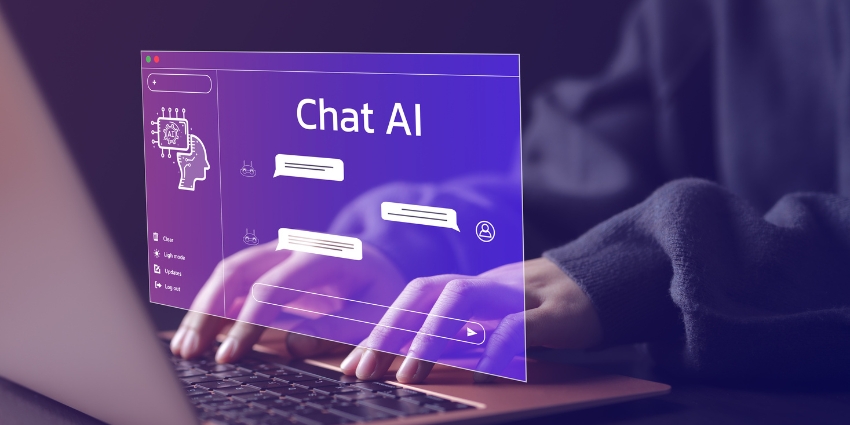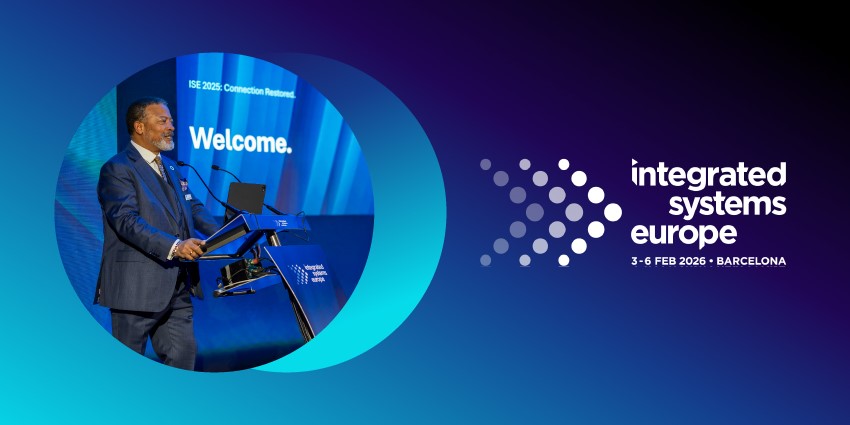Could intelligent search be the key to transforming user experiences within unified communications platforms? Vendors like Zoom certainly seem to think so.
Zoom’s partnership with Perplexity.AI will soon allow team members on Zoom Workplace plans to access enterprise-level AI search solutions within the Zoom platform. But what exactly does this mean for the future of UC and the employee experience in general?
It’s no secret that AI is making it easier to navigate and use unified communication tools more effectively. Tools like Microsoft Copilot, Google Gemini for Workspace, and Zoom’s AI Companion transform workplace processes. They’re making it easier to summarize and transcribe meetings, create content, and even optimize workplace schedules.
So, what will intelligent search solutions add to the mix?
Understanding Intelligent Search in the Enterprise
The concept of “intelligent search” is nothing new to most companies. For years, companies have struggled to simplify the search for information in a world where data volumes are growing and employees are using more disconnected apps than ever. In fact, according to Statista, the number of SaaS apps used by companies has grown every year since 2015.
To streamline knowledge gathering and sharing, companies have frequently turned to dedicated “Intelligent Search” tools designed to bridge the gaps between data silos. You’re probably familiar with solutions like IBM Watson Discovery, Algolia, and Coveo.
However, these tools only solve one problem: They unify databases and information within a company’s ecosystem. However, they don’t help team members navigate the web or combine their existing data with up-to-date insights. They also don’t offer direct access to search solutions within the platforms companies already use for communication, like Zoom and Microsoft Teams.
Companies like Zoom, through their partnership with Perplexity AI, are introducing a new solution designed specifically to improve productivity, communication, and collaboration.
Zoom and Perplexity: Bringing Intelligent Search into UC
Most leading unified communications companies investing in AI solutions are already exploring new ways to improve user experiences with their tools. Solutions like Microsoft Copilot already make it easier to search for data, and answers to questions.
Microsoft 365 Copilot, for instance, can answer questions by sourcing proprietary data from the Microsoft Graph and searching the web. Zoom’s partnership with Perplexity will enhance the experience of Zoom Workplace users in the years ahead.
Many consider Perplexity AI the world’s leading AI-powered search engine. It combines generative and conversational AI, machine learning, and advanced algorithms to streamline how people search for information. The “answer engine” browses the Internet to provide complete, verifiable answers to questions, with citations and multimedia content.
Already, countless companies use this system to enhance intelligent search for team members. HP’s salesforce uses Perplexity for in-depth prospect research. Marketing teams at Amplitude use Perplexity to draft market insights. Even product teams at Zoom use Perplexity for targeted search.
By embedding an advanced way to search and extract information from the Internet into Zoom Workplace, Zoom is enhancing the value teams get out of their unified communication platforms. Rather than having to search for quick answers to queries on the Internet and combine their research with internal data, teams will have a full search solution at their fingertips at all times.
The Power of AI Search Solutions
The ability to use an intelligent search engine within a UC platform might not seem to deliver huge value at first. After all, employees can easily access Google’s “AI overview” solution to get rapid insights into data. However, these solutions are relatively limited for business users.
They can’t “customize” responses to a specific employee’s needs with exceptional accuracy or expand answers based on follow-up questions like Perplexity AI. With an intelligent search solution within a UC platform, team members get a far more advanced search assistant.
In Zoom Workplace, for instance, team members can use Perplexity AI within Zoom Companion to enable more advanced search strategies. They’ll be able to upload documents into a chat system, and ask for insights that draw on information from the web, and the context in those files.
For instance, a product designer could share the specs of a new item with Zoom AI Companion, and ask it to suggest improvements based on the latest reports and research available on the web. Imagine how much more streamlined this could make product development processes.
Sales teams using Zoom could ask AI companion for rapid insights into the latest market trends and concerns, so they can create more intuitive sales pitches at speed.
The Benefits of Intelligent Search for UC Solutions
Ultimately, bringing intelligent search capabilities into unified communication platforms has the power to transform productivity and simplify knowledge retrieval for any employee. With tools like Perplexity.AI in Zoom or OpenAI’s new “SearchGPT” solution embedded into a UC platform, getting relevant, contextual answers to questions will be easier than ever.
AI search in UC tools will lead to:
Faster Search Processes
How long do you usually spend searching for answers to questions on platforms like Google? Are you spending forever clicking on different websites? How long do you spend just fact-checking sources?
An intelligent search system accelerates the search process. Tools like Perplexity AI can gather data from hundreds of different websites and sources at once, analyze their value, and surface an answer to a query in seconds. In fact, one case study showed that a bank used intelligent search to reduce ten days of “research” work into two minutes of effort.
Streamlined Meetings
Intelligent search built into a unified communication platform like Zoom or Microsoft Teams could help to reduce lengthy, frustrating meetings. Instead of having to put a conversation on pause to search the internet for relevant information, team members will be able to ask their AI companion to do the work for them.
For instance, in a meeting about customer retention rates, an employee could ask Zoom AI Companion to share all of the top data about churn in their industry with the team in seconds. Meeting leaders could even use the same tool to prepare agendas and documents for meetings, sourcing information from both the web, and their internal resources. This means everyone can step into a meeting with all the insights they’ll need for a productive conversation.
More Accurate, Relevant Search Results
Getting accurate answers to questions from the web can take a lot of effort. Enhanced AI models can search through various sources of information at speed, to boost your chances of ending up with the right responses straight away. They can find the most up-to-date information from across the web, and even customize responses based on your prompts.
For instance, if you share your own proprietary data with an intelligent search system before they start scanning the web, they can take your information into account. This means they’ll be more likely to deliver contextual, relevant responses to every query.
Improved Knowledge Sharing
One of the best things about intelligent search solutions like Perplexity AI, is they don’t just summarize information from the web into simple, text-based responses to queries. They can also convert data into different formats, making sharing knowledge with your entire team easier.
Users can ask their AI bot to transform the latest data about customer purchasing preferences into a graph or chart for the sales team to review. They could even ask their AI assistant to translate a summary into different languages for team members worldwide. This will make sharing knowledge through UC platforms far simpler, and more efficient.
Reduced App Overload
Finally, building intelligent search capabilities into a Unified Communications platform means employees can access more of the tools they need in a single environment. This is becoming increasingly crucial for companies that are struggling to minimize the productivity losses caused by endless “app switching” in the modern workplace.
Already, companies are trying to unify contact center and UCaaS tools with various other platforms and systems. Adding AI search simply makes the “single pane of glass” environment for workplace productivity even more comprehensive.
Enhanced Employee Experiences
Increasingly, vendors in the Unified Communications space are differentiating their platforms not based on features, but on the experiences that users get within the platform. The easier and more convenient a platform is to use, the happier, and more productive team members will be.
Intelligent search solutions within UC platforms will help to enhance the user experience even further, giving them a great way to cut down on the frustration of searching for information manually.
The Continued Impact of AI on Unified Communications
AI, particularly more advanced solutions like generative and conversational AI systems, are having a monumental impact on the unified communications landscape. These tools aren’t just making it easier to summarize meetings and create content.
AI tools are becoming genuine always-on “personal assistants” for today’s employees. Built into UC tools, they can deliver constant guidance and support with virtually every task an employee might face. AI systems can even teach employees how to use new features as they emerge in unified communications platforms, and guide them through new processes.
On a broad scale, the introduction of solutions like intelligent search in unified communications systems could have a significant impact on how vendors create and promote new UC platforms. Rather than simply trying to show customers that they have the widest range of “AI features”, vendors will begin to shift gears.
Companies like Zoom, Microsoft Teams, and Google will begin highlighting the productivity “savings” companies can achieve with their tools. They’ll draw attention to measurable impact that things like AI search, summarization, and transcription can have on team efficiency.
They’ll show how these tools not only improve performance among teams, but improve the employee experience, reducing repetitive and complex tasks into simple processes.
The Future of Intelligent Search in UC
Zoom is just one of the first companies embedding next-level intelligent search solutions into its unified communications platform. In the years ahead, countless other vendors will likely follow in their footsteps. That’s particularly true for companies like Google and Microsoft, which already have their own AI search solutions available to consumers.
Although it might not seem like the most advanced AI feature a UC platform can offer today, intelligent search will definitely deliver a lot of benefits to users. It could be the next stage in making UC platforms more convenient, comprehensive, and user-friendly for everyone.







